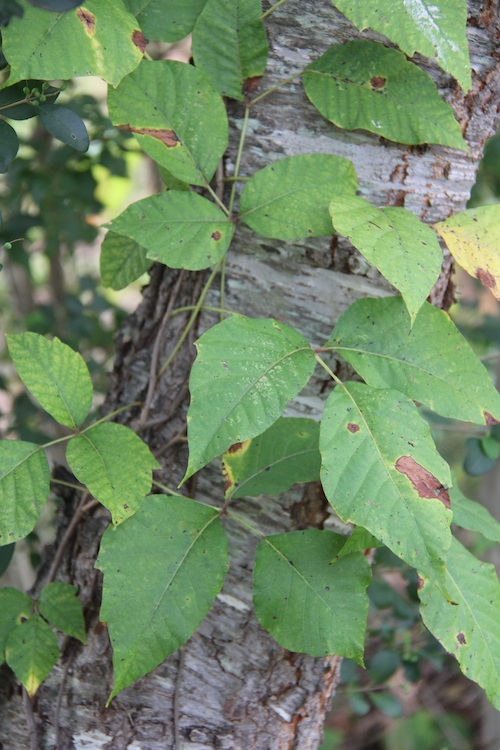Growing a vegetable garden consists of more than just keeping the plants healthy. It’s also about making sure the weeds don’t take over.
This spring’s frequent rains created ideal conditions for weeds to grow, says University of Georgia Extension agent Frank Watson.
“Considering the droughts we’ve had this time of year, the rain was good to see in a lot of ways,” he said. “But many gardeners were afraid to cultivate for fear of losing that moisture. Now, the weeds are taking over.”
Unfortunately, there are no postemergence herbicides that are safe to use in vegetable gardens, he said. Cultivation, removing weeds by hand or with help from tools, is usually the only option.
Small weeds 1 to 2 inches tall can be quickly and easily removed with a hoe, garden rake or by hand. Large weeds take a lot more time and effort.
“As weeds exceed 6 inches in height, they tend to become more troublesome. Extensive root systems — often along with deep taproots — make it difficult to get the weeds out of the soil,” Watson said.
Small handheld hook-type weeding tools can help pull out weeds by the roots and prevent them from coming back. These range in price from $4 to $30, for more complicated models.
Some gardeners choose to ignore weeds and hope they will go away, Watson said.
“Weeds that are allowed to make seed will significantly increase weed problems in future years. It takes only a few scattered weeds to produce enough seed to cover the entire garden next year,” he said.
With weeds, the best defense is early offense
UGA Extension consumer horticulturist Bob Westerfield says the best way to maintain a weed-free garden is to prevent it from establishing in the first place.
The sun can be used to kill weeds in a garden plot, but you have to start before you plant.
Till the area, moisten it and cover it with layers of plastic held in place by rocks. After about four weeks, the sun will have baked the area underneath to temperatures of 140, 150 or 160 degrees and killed any weeds.
If weeds have already emerged in the garden plot and you are ready to plant seeds or seedlings, Westerfield says remove the weeds as soon as possible.
“It’s a whole lot easier to prevent weeds than to get them out of the garden once they have a foothold,” he said.
Westerfield likes to control weeds without pesticides and uses garden mats and the sun instead. Planting directly into precut holes in garden mats allows the vegetable plants to grow, but not the weeds.
UGA Extension weed scientist Mark Czarnota spends his workdays searching for ways to control weeds. He also recommends using physical barriers — like plastic or weed barrier fabric — to prevent weeds from emerging in the first place.
“Usually three mil plastic will hold up for a season, but newspapers are an inexpensive alternative,” he said.
Czarnota also recommends using a two- to four-inch layer of mulch to control weeds.
“Don’t use grass clippings because they may contain herbicides,” he said.
Westerfield places newspapers covered with straw around plants in his own garden, and then runs a tiller between rows to destroy weeds.
“The bad side of using the tiller method is that every time you till the soil, you dry it out and run the risk of bringing weed seeds to the surface,” he said.
As vegetable plants grow, they will begin to shade out weeds, which reduces their numbers, Westerfield said.
Gardeners have additional options outside the vegetable garden
Outside the vegetable garden, gardeners have more options to control weed problems. Chemical control methods are not harmful when used correctly, Czarnota said.
Most problems come from the drift of post-emergence herbicides and carryover of pre-emergence herbicides in soil or mulches. The drift of Roundup (glyphosate) near vegetables like tomatoes is a big problem among homeowners, he said.
“Some people use table salt, oils and fatty acids as organic herbicides. They also use corn gluten; acetic, capric and malic acid; cinnamon; clove; and lemon oil. But synthetically-manufactured herbicides still contain the largest, most effective arsenal available to both commercial and home growers,” Czarnota said.
Fire is another control method. It is used to remove brush from conifers. Flame throwers are used to remove weeds growing through cracks in sidewalks, Czarnota said.
For larger areas, pastures or areas that are already overgrown with weeds, Czarnota says gardeners can use biological control methods, like goats and other grazing animals. Grass carp are used to control weeds in ponds and lakes.
For more on controlling specific weeds in home landscapes, see the UGA publication website at www.caes.uga.edu/publications.








